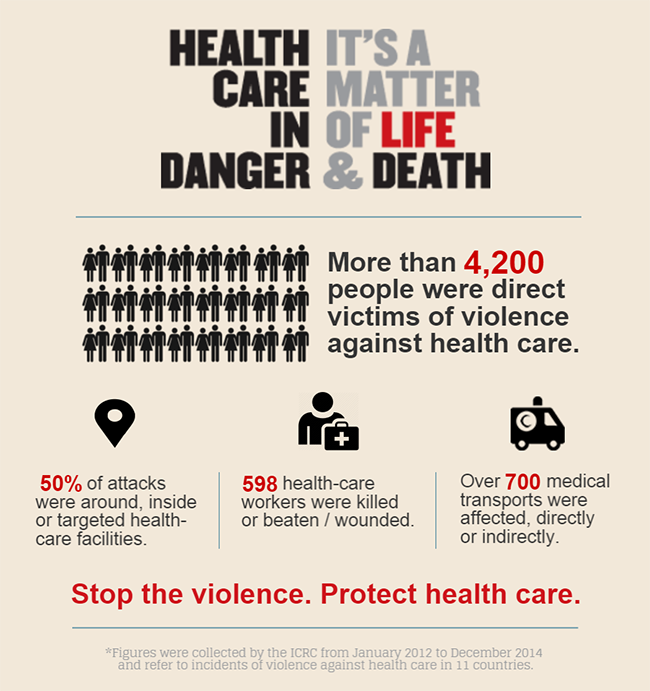Understanding violence affecting health care
What are the most common forms of violence, actual and threatened, against health care in armed conflicts and other emergencies? And what are their consequences for people, health-care facilities and medical vehicles?
The ICRC has published Violent Incidents Affecting the Delivery of Health Care, the third in a series of interim reports. The report is based on data on 2,398 incidents, collected between January 2012 and December 2014 from various sources in 11 countries where ICRC field teams are active. Several of its findings should cause alarm:
- Over 50% of the incidents documented occurred inside or within the perimeter of health-care facilities.
- A total of 1,134 health-care workers were subjected to threats and/or coerced to violate medical ethics or to provide free treatment.
- Over 700 medical vehicles were directly or indirectly attacked and/or obstructed; this took place during demonstrations as well.

It is clear from the foregoing that certain measures are urgently needed to make health-care facilities more secure, promote respect for medical ethics and ensure safe access to health care. But in order to deal comprehensively with the problem, policymakers, non-governmental organizations (NGOs), humanitarian agencies and others willing to act on violence against health care should undertake thorough, context-specific analyses at the national level; this includes examining the root causes of violence against health care. Having this information is crucial for tackling the violence affecting health-care delivery.



